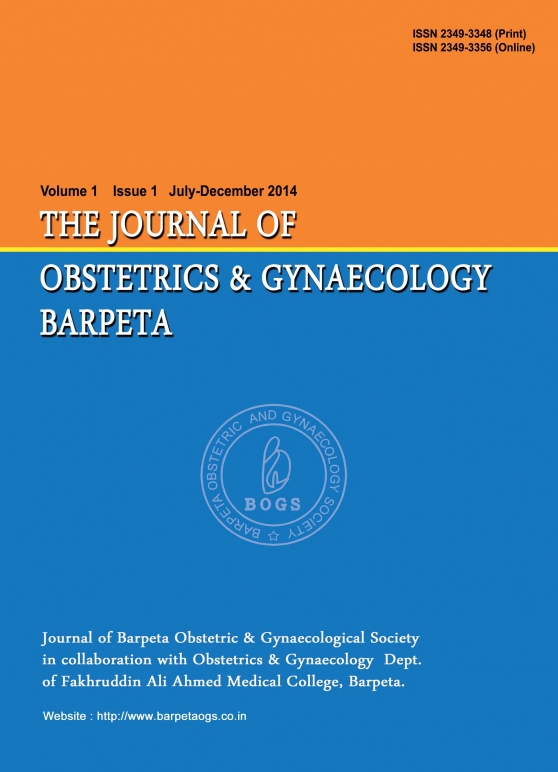
The New Indian Journal of OBGYN. Epub Ahead of Print
Histopathological study of endometrium in abnormal uterine bleeding with expression of oestrogen and progesterone receptors
Priya Suneja, Prema Saldanha
ABSTRACT
Background: Abnormal uterine bleeding (AUB) is a common gynaecological condition. Studies show that there is altered expression of oestrogen receptors (ER) and progesterone receptors (PR) in the endometrium which may have a role in the aetiology of abnormal bleeding. Objectives: To study the histopathological findings of endometrium and expression of oestrogen and progesterone receptors in the endometrium in patients with AUB. Materials and methods: A total of 63 endometrial biopsies were examined after obtaining ethical clearance from November 2018 to December 2019. After histopathological examination, all the cases were subjected to immunohistochemistry for ER and PR and were scored by Allred scoring system. Results: Majority of the patients were in the age group 41- 50 years and presented with heavy menstrual bleeding. Maximum number of cases were of endometrial hyperplasia (EH) without atypia (63%) followed by proliferative endometrium (21%), disordered proliferative endometrium (11%) and secretory endometrium (5%). Mean Allred score in AUB patients for ER expression in glands and stroma was significantly more than mean score for PR expression ( glands – 7.3±1.5 vs 6.7 ± 1.8, p=0.00; stroma – 6.2±1.3 vs 5.8±1.6, p=0.00). ER expression in endometrial glands and stroma across various histologic patterns of AUB was higher than PR and this difference was significant in EH without atypia (7.2±1.8 vs 6.6±2, p=0.001; stroma – 6.2±1.16 vs 5.7±1.8, p=0.001). However, in other histological patterns, even though ER expression was higher than PR expression, test of significance could not be applied because of a smaller number of cases. Conclusion: Increased expression of ER was observed compared to PR in all histological patterns in patients with AUB. ER expression was significantly more in cases of endometrial hyperplasia without atypia indicating they may have a role in etiopathogenesis of endometrial hyperplasia.
Volume 1 Issue 2
Volume 2 Issue 1
Volume 2 Issue 2
Volume 3 Issue 1
Volume 3 Issue 2
Volume 4 Issue 1
Volume 4 Issue 2
Volume 5 Issue 1
Volume 5 Issue 2
Volume 6 Issue 1
Volume 6 Issue 2
Volume 7 Issue 1
Volume 7 Issue 2
Volume 8 Issue 1
Volume 8 Issue 2
Volume 9 Issue 1
Volume 9 Issue 2
Volume 10 Issue 1
Volume 10 Issue 2

